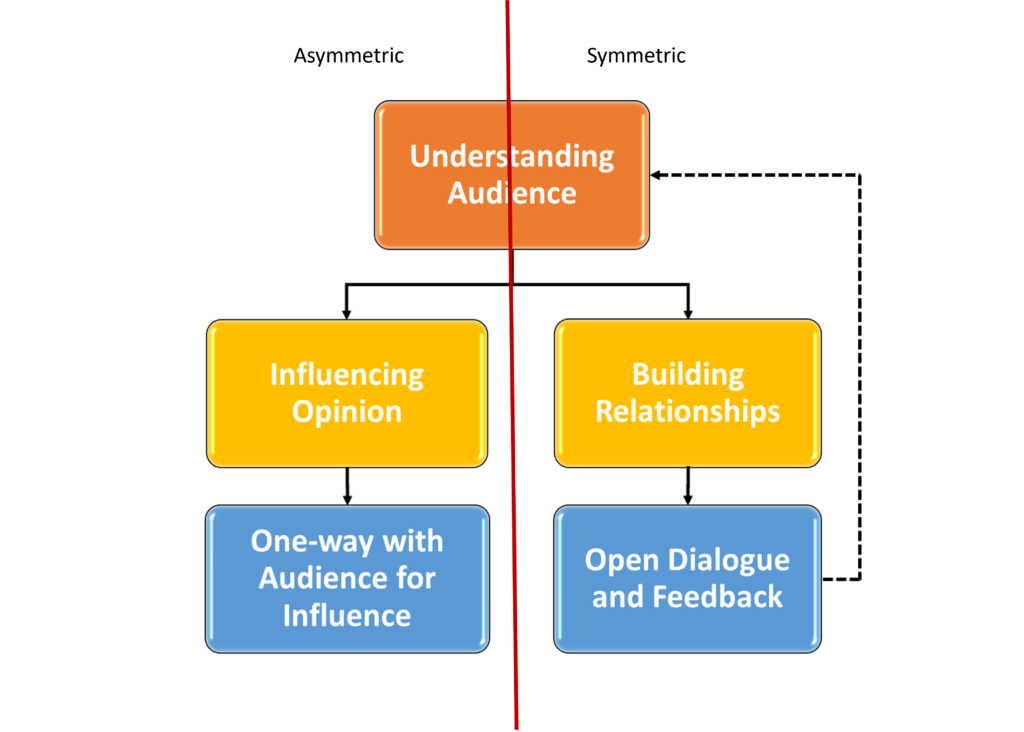PR Theory 3 & 4: Asymmetric and Symmetric
These models focus on bidirectionality of information flow and the interaction/alternation of sender and receiver. In the Two-Way Asymmetric Model, organizations seek to understand, primarily through research, the needs and preferences of audiences to influence their opinions and behaviors. Two-Way Symmetric Models go one step further, emphasizing mutual understanding and dialogue between organizations and the public. Two-Way Symmetric Models are used for developing relationships based on open communication, addressing concerns, and changing strategies according to feedback. Feedforward can also be harnessed.
Both Two-Way Models stress the importance of interaction between organizations and the public/senders and receivers. Both models attempt to achieve a situation of mutual gain between the sending organization and its receiving publics, hence “(a)symmetric”. In the Asymmetric approach, organizations issue messages to influence opinions; in the Symmetric approach, the audience is more than a receiver – it is a source of information about itself: organizations and the public engage in seemingly open dialogue to – it is hoped – build mutual understanding and collaborative relationships. The Asymmetrical Model attempts to steer opinion. The Symmetrical Model attempts to align the views of both parties. Of the two models, the Symmetrical Model is usually believed to be the more ethical. Personally, I see very litle meaningful difference between these two models.

Note that in this diagram, the arrows do not indicate flows or directions of information. I have added these arrows to indicate sequence and the hierarchical order of activities. They indicate process steps, but separating these into discrete phases is, I believe, a difficult and probably unnecessary undertaking. There is a dotted line in the Symmetric Model. Most diagrams that illustrate these models do not include this line. This is my addition too, included to draw attention to the inevitable looping that must occur: to achieve audience understanding, dialogue and feedback must be received and digested.
Like the other two models described in this series, these two are excessively reductionist, excessively simplistic, and artificially compartmental. These models could be critiqued to ruins by any undergraduate, and I imagine they are of extremely limited usefulness to any practitioner today. If they have value, it is this: they force theorists to accept that devising accurate models of planned communication practice (e.g. PR) is complex. There might also be this: such models give scholars an insight into how PR/communications used to be theorised, and these legacy theories reveal the dominant practices, assumptions, and structures of decades gone by.
